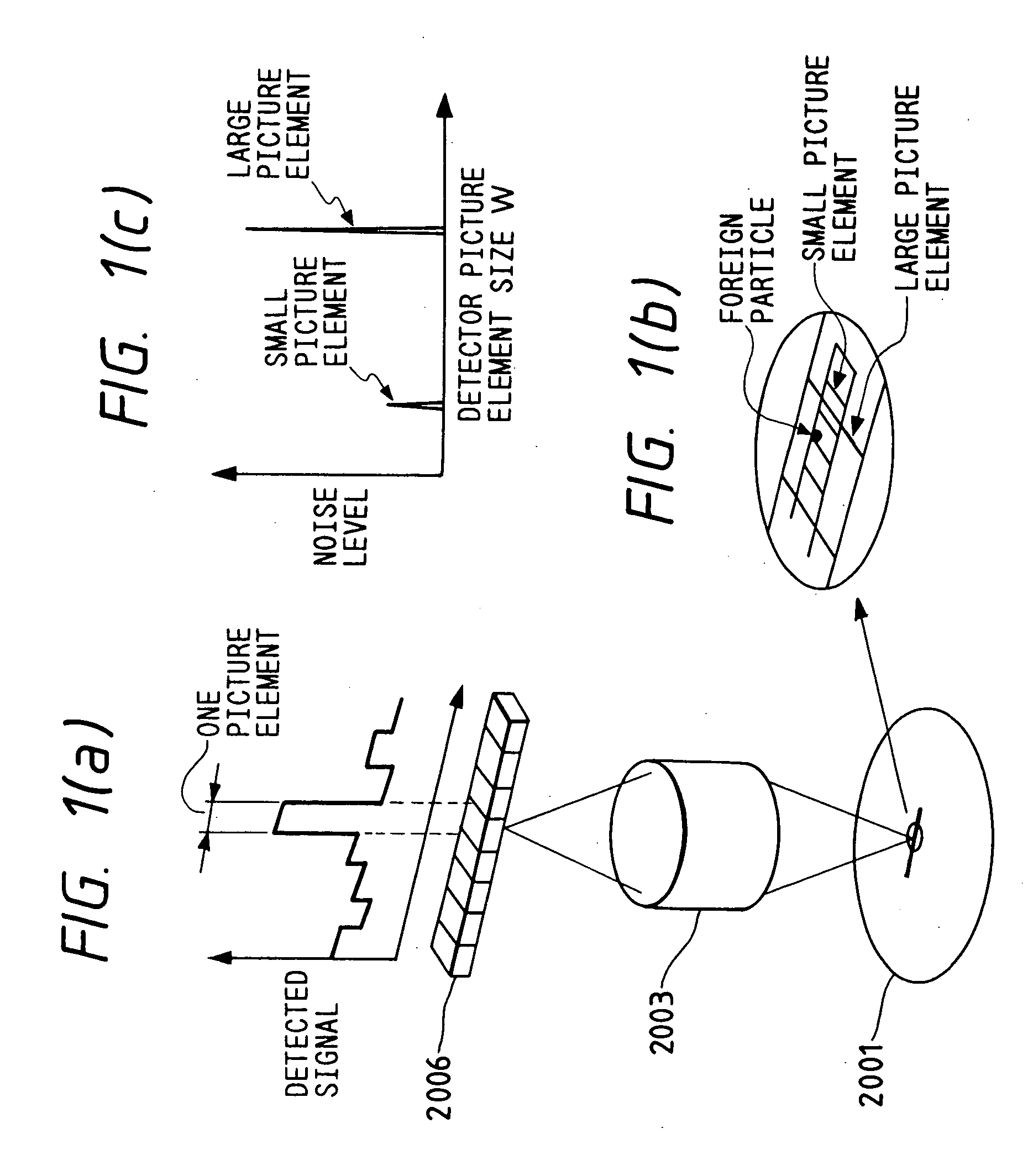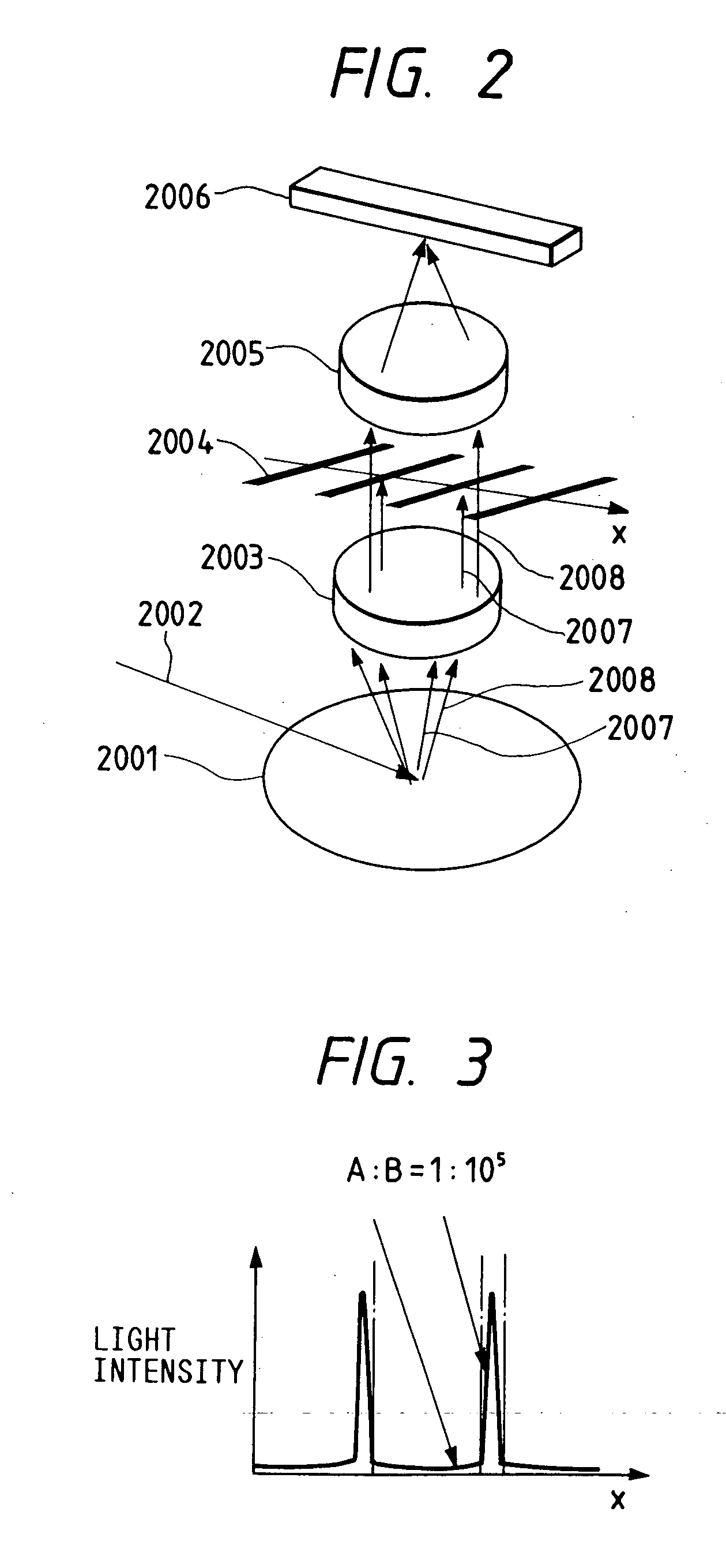Method and apparatus for analyzing the state of generation of foreign particles in semiconductor fabrication process
a technology of foreign particles and semiconductor fabrication, which is applied in the direction of semiconductor/solid-state device testing/measurement, optical radiation measurement, instruments, etc., can solve the problems of failure to increase the inspection frequency up to a sufficient value, the defect of wiring and short-circuits, and the breakdown of the insulating film, etc., to achieve the effect of improving the yield, increasing the number of defects generated, and improving the yield
- Summary
- Abstract
- Description
- Claims
- Application Information
AI Technical Summary
Benefits of technology
Problems solved by technology
Method used
Image
Examples
Embodiment Construction
[0064] The present invention is an improvement over U.S. Ser. No. 07 / 778,363 and therefore the contents described in the U.S. Ser. No. 07 / 778,363 will here be omitted.
[0065] In realizing a small-sized, high-speed, foreign particle inspection apparatus, the method using a spatial filter is more suitable than the polarized light detection method shown in the prior art (Japanese Patent Laid Open No. 89336 / 87). The reason for this conclusion will be stated below with reference to FIGS. 1, 2 and 3.
[0066] In the method wherein light is radiated to a sample and scattered light from foreign particles is detected in the scattered light from patterns formed on the sample surface causes noise. The larger the size of a picture element (a minimum unit detected as one signal) in a detector 2006, the larger the said noise, as shown in FIG. 1(c). Since the patterns as a noise source are formed substantially on the whole surface of the sample, the noise becomes larger in proportion to the picture ...
PUM
| Property | Measurement | Unit |
|---|---|---|
| size | aaaaa | aaaaa |
| size | aaaaa | aaaaa |
| clock frequency | aaaaa | aaaaa |
Abstract
Description
Claims
Application Information
 Login to View More
Login to View More - R&D
- Intellectual Property
- Life Sciences
- Materials
- Tech Scout
- Unparalleled Data Quality
- Higher Quality Content
- 60% Fewer Hallucinations
Browse by: Latest US Patents, China's latest patents, Technical Efficacy Thesaurus, Application Domain, Technology Topic, Popular Technical Reports.
© 2025 PatSnap. All rights reserved.Legal|Privacy policy|Modern Slavery Act Transparency Statement|Sitemap|About US| Contact US: help@patsnap.com



